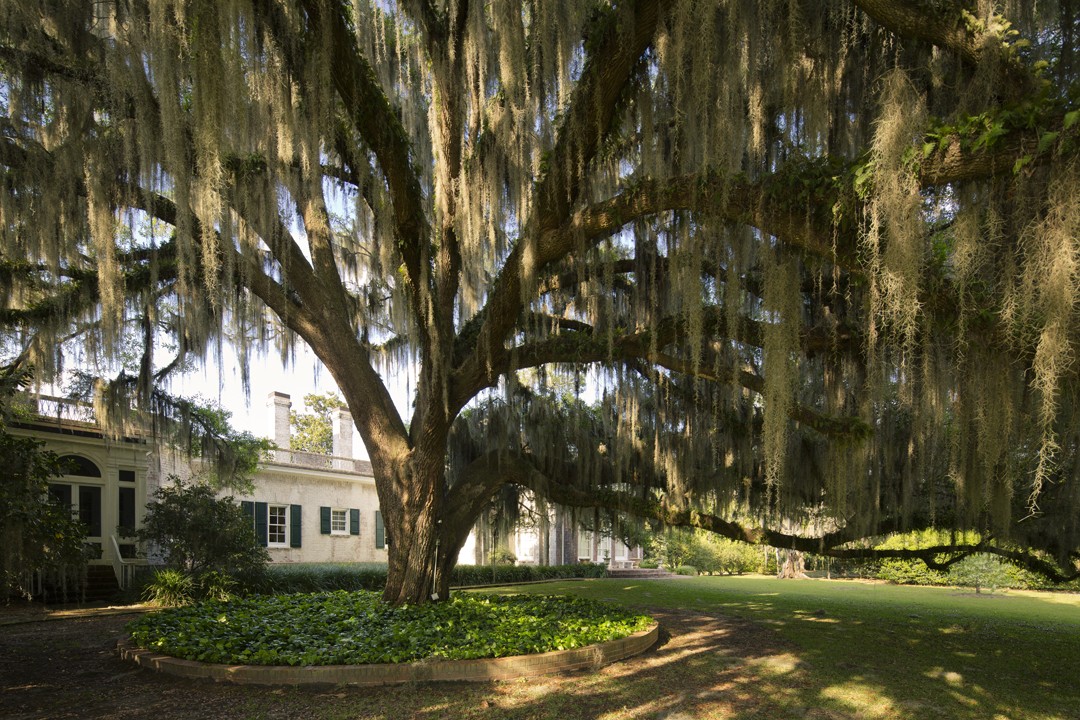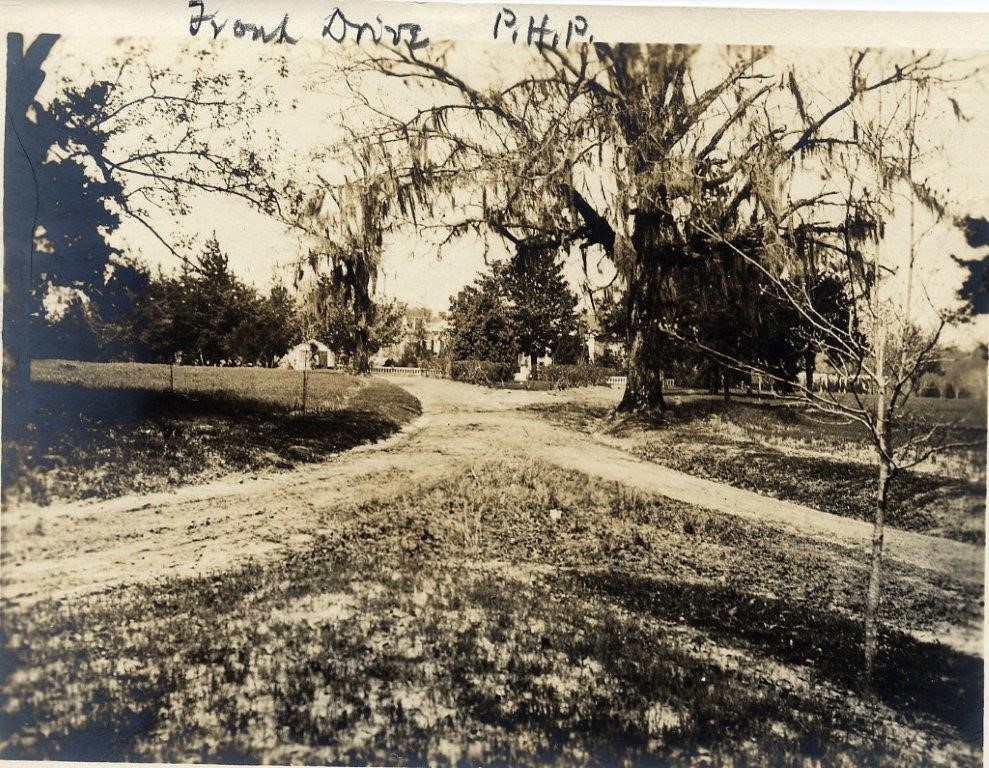Stop #7
Original Entrance
The original main entrance to the property from Highway 319 came through this area to the Main House. In the late 1930s, the main entry drive was changed to the route it is today.
*Plantings included in Miss Harrison’s master plan
 Native plant
Native plant
Common China Fir*
Cunninghamia lanceolata
Also known as monkey tree, the Common Chine Fir is a very tall evergreen conifer that can reach heights upward of 150 feet. Often growing with a multi-trunked form, the Common China Fir produces interesting bark with dark brown colors and spiraling green leaves with a lanceolate shape. It produces small cones at the tips of the branches in late winter.
Flowering Dogwood*
Cornus florida
The flowering dogwood is a small native deciduous tree that may grow up to 20 to 30 feet tall with scarlet red-brown leaves in the fall. Emerging before the leaves in early spring, the true dogwood flower is actually tiny yellowish-green, button-like compacted clusters surrounded by four showy white petal-like bracts which give the appearance of beautiful four petaled white flowers. The dogwood tree produces fruit in the form of a cluster of bright red drupes that mature in the fall and are an important food source for small mammals and dozens of species of birds. The dogwood tree is also an important larval host plant for several species of moths and butterflies.
Longleaf Pine*
Pinus palustris
This native evergreen conifer features the longest needle-like leaves of the eastern pine species which usually occur in bundles of three. Longleaf pines can take 100 to 150 years to become full size, can grow from 80 to 100 feet tall, and may live to be 500 years old. The bark is thick, orange-brown with papery scales and plated on larger mature trees. The longleaf pine produces larger cones with seeds that are an excellent food source for mammals and birds.
Red Japanese Maple
Acer palmatum
This deciduous shrub or small tree with a dome-like canopy grows 10 to 25 feet tall and produces a pair of seeds with paper tissue-like wings that twirl slowly to the ground in the fall. The Japanese maple leaves are deeply lobed and are reddish purple in the spring and reappear again with spectacular color in the fall.
Saucer Magnolia
Magnolia x soulangiana ‘Brozzoni’
This deciduous tree produces gorgeous blossoms before the leaves appear in late January to mid February. Also known as tulip magnolia, the saucer magnolia petals grow fairly upright, giving the flowers a distinctively tulip-like appearance. As the flowers age, the petals tend to open more and lay down, creating a more saucer-shaped flower. Unlike most saucer magnolias, this specimen produces white blooms instead of pink.
Front drive to the Main House circa 1920s

